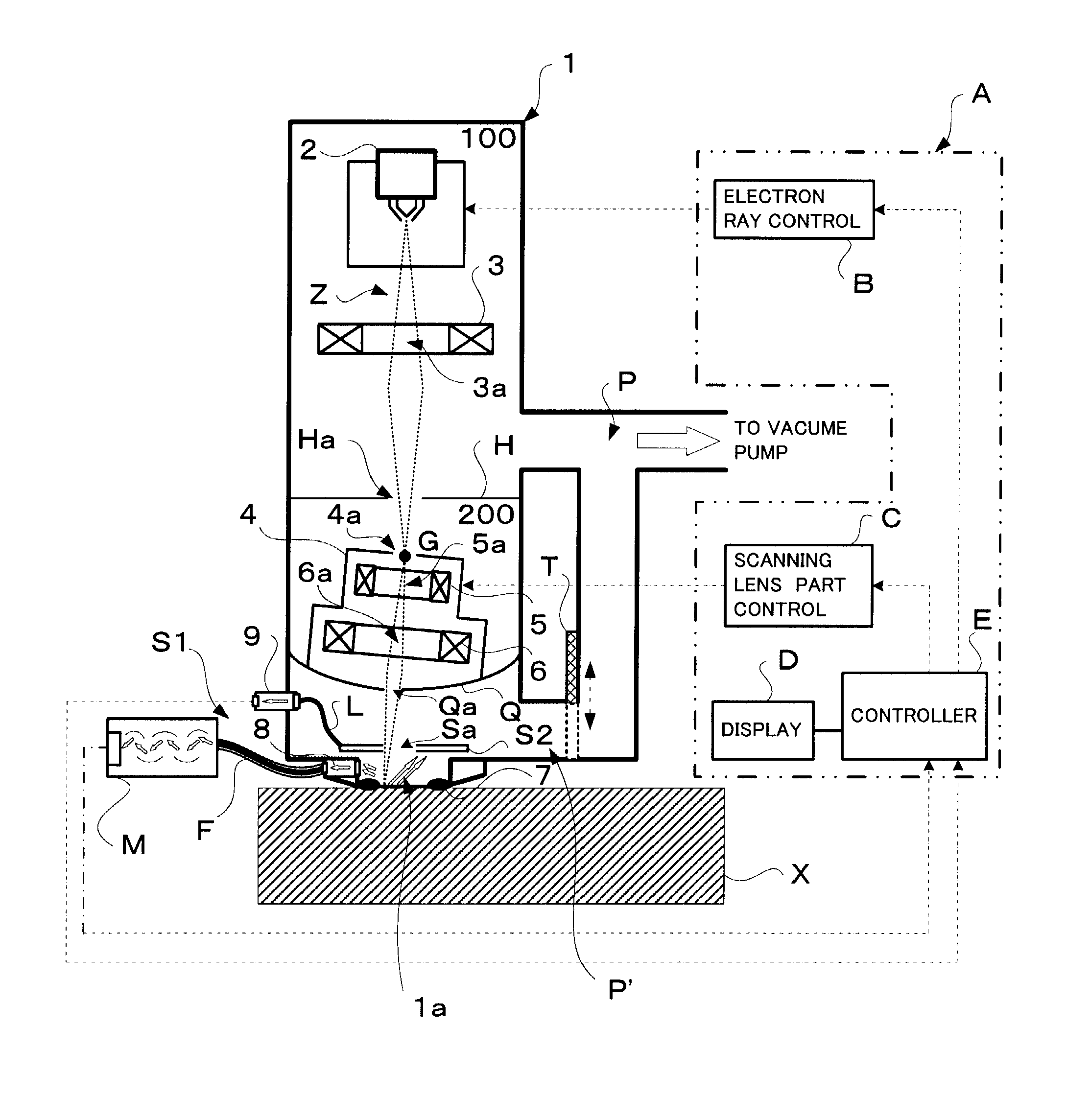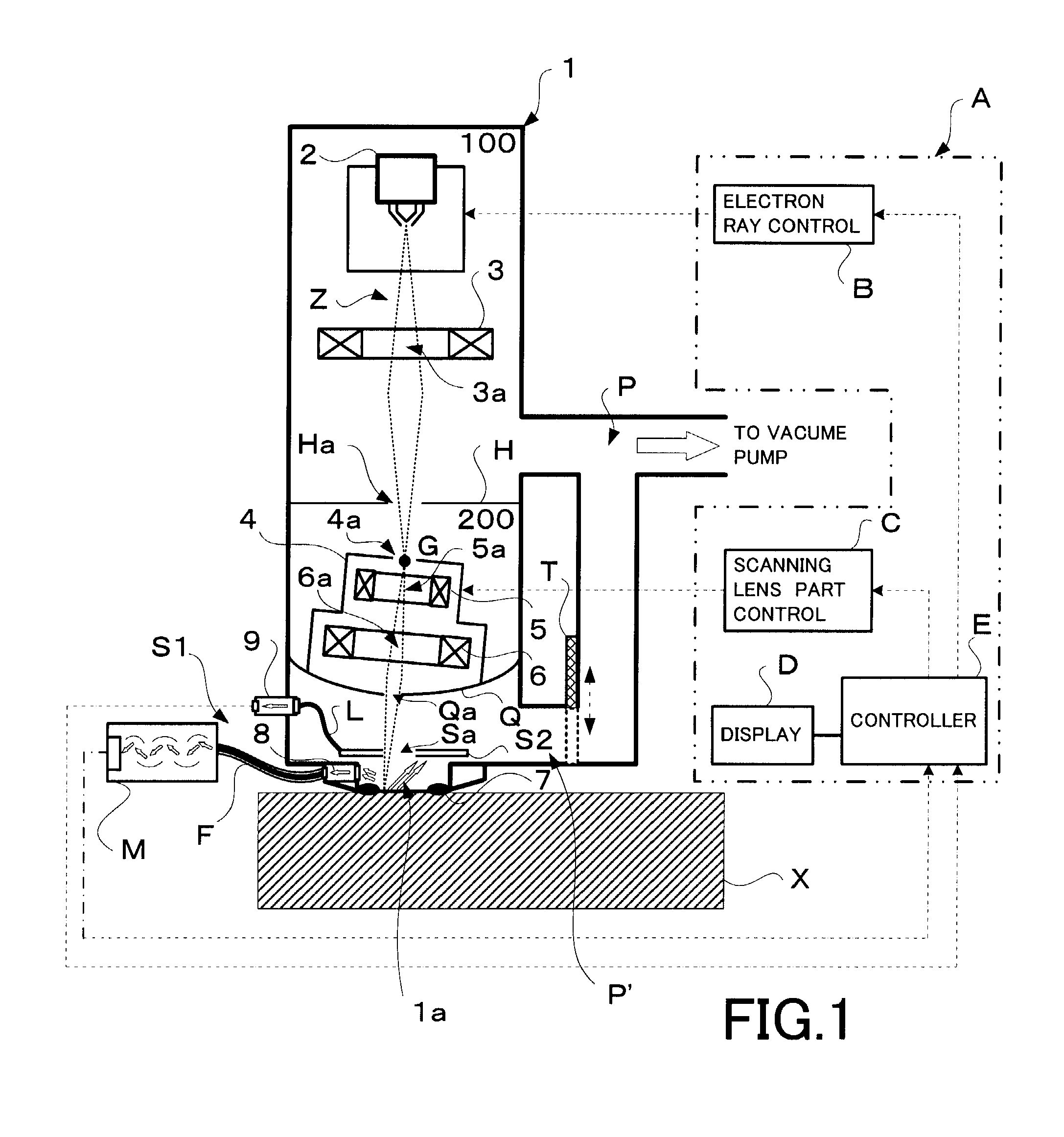Scanning electron microscope
a scanning electron microscope and electron microscope technology, applied in the field of scanning electron microscope, can solve the problems of destroying the observation object, the observation object unavoidably loses its function, and cannot be used for its intended purpose any more,
- Summary
- Abstract
- Description
- Claims
- Application Information
AI Technical Summary
Benefits of technology
Problems solved by technology
Method used
Image
Examples
Embodiment Construction
[0021]Description is hereinafter made of an embodiment of the present invention in detail with reference to accompanying drawings.
[0022]FIG. 1 is a conceptual diagram illustrating one embodiment of a general configuration of a scanning electron microscope according to the present invention. The scanning electron microscope shown in FIG. 1 can be roughly divided into a lens barrel 1 constituting a microscope main unit for irradiating electron rays Z onto an observation object (sample) X, scanning the observation object X with the electron rays Z and so on, a secondary electron detector S1 and a reflected electron detector S2 provided separately and independently from the lens barrel 1 for detecting secondary electrons and reflected electrons, respectively, emitted from the observation object X in response to the irradiation of the electron rays Z, and a control device group A for performing electron ray control operations such as the emission of the electron rays Z and scanning in th...
PUM
 Login to View More
Login to View More Abstract
Description
Claims
Application Information
 Login to View More
Login to View More - R&D
- Intellectual Property
- Life Sciences
- Materials
- Tech Scout
- Unparalleled Data Quality
- Higher Quality Content
- 60% Fewer Hallucinations
Browse by: Latest US Patents, China's latest patents, Technical Efficacy Thesaurus, Application Domain, Technology Topic, Popular Technical Reports.
© 2025 PatSnap. All rights reserved.Legal|Privacy policy|Modern Slavery Act Transparency Statement|Sitemap|About US| Contact US: help@patsnap.com



